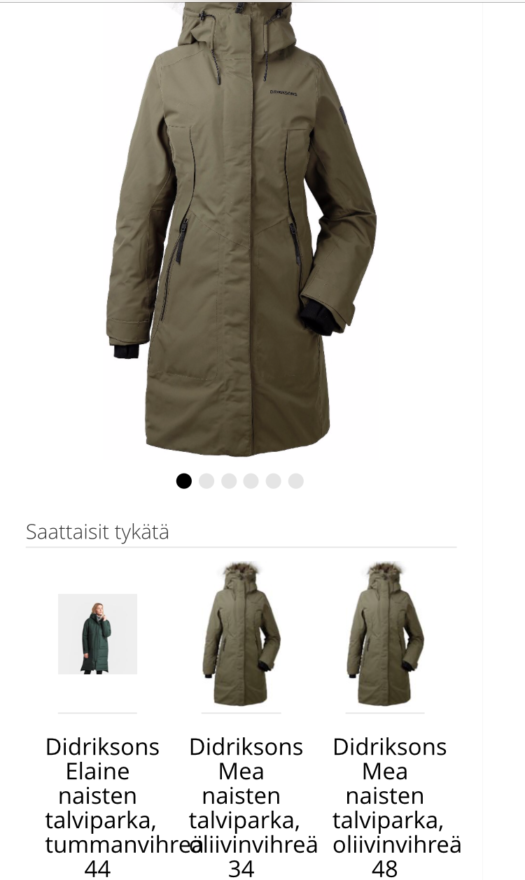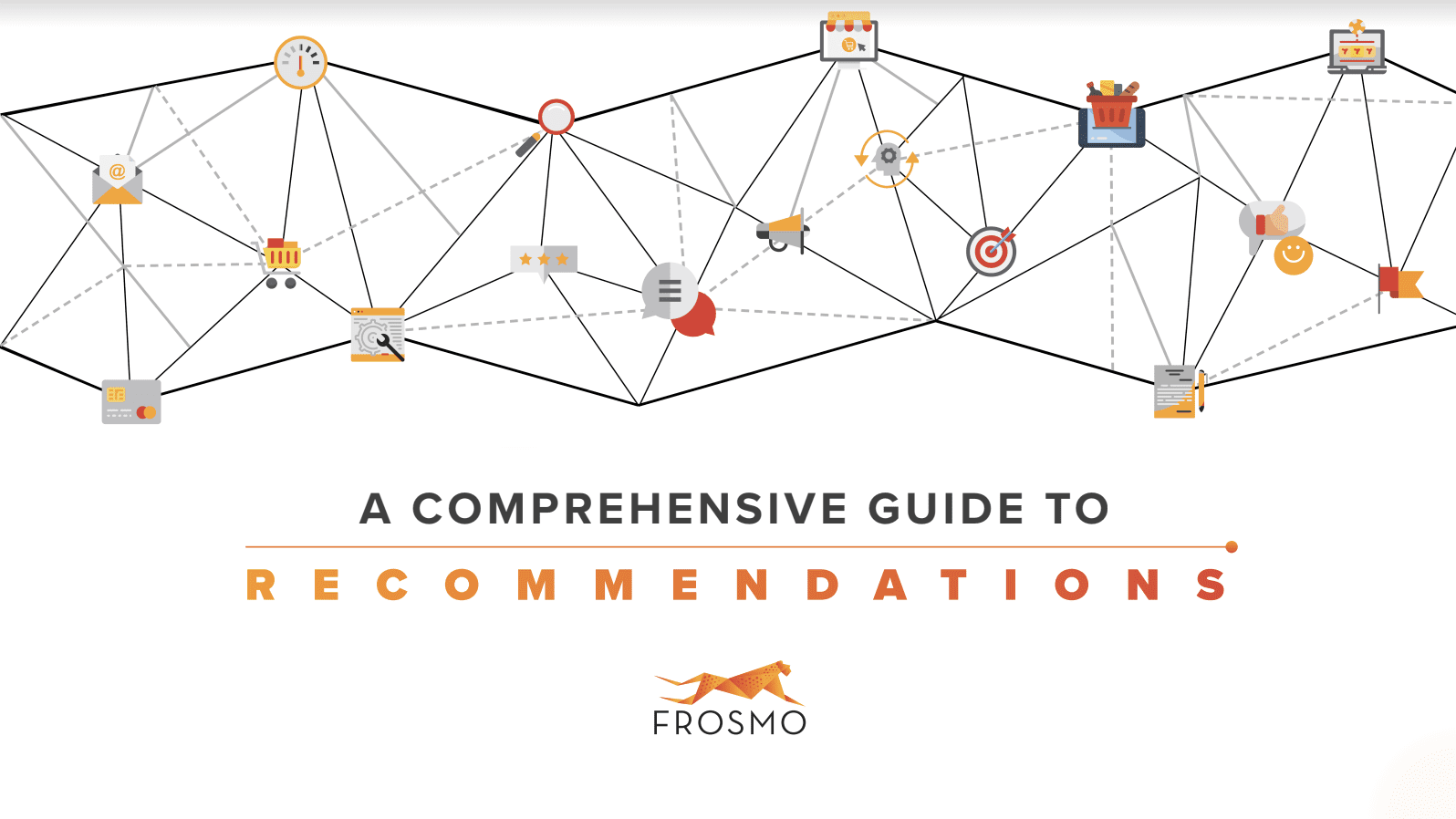Delivering product recommendations that customers can trust


Maija Erkheikki
Helsinki is located on a peninsula and surrounded by the cold waters of the Baltic Sea. So half of the year means freezing wind and temperatures fluctuating between +5C and -5C. And now that winter is fast approaching, I have to make sure that I have the proper outdoor wear.
This year, I was on my search for a new winter parka jacket as the current one has finally reached the end of its lifecycle.
I went through many options and utilized highly relevant product recommendations related to similar products by many retailers. In the process, I also came across a few irrelevant recommendation strategies.
The first interesting one was on a mobile page of one retailer, where they clearly had an issue regarding what level of product information is used for recommendations. The image shows the example of a green winter park size 38. The recommendation engine had decided that the top three recommendations for me would be:
- A winter parka of the same brand, but three sizes bigger, the product itself was relevant, size not so much
- The exact same product, but two sizes smaller
- The exact same product, but five sizes bigger

What a shame. Mobile is a challenging user interface, as the screen is so small and often, the visitor browses quickly through pages so it would be extremely important to make the most of the real estate available.
After going through price and availability options, I decided where to buy the parka jacket. I would have been the perfect candidate for add-on products, such as gloves or scarves, in the last stage of my purchase journey, but guess what they recommended for me?
- Exactly the same jacket, but a different color
- Another jacket, less than half of the price

At Frosmo, we advise our customers not to make their visitors get confused and doubt their purchases during the whole customer journey. Instead, we consider offering complementary products all the way through the funnel as a form of good customer service.
As I now wait for my order, I’m having second thoughts as to whether the green parka is better than the black one.
How to do smart and effective product recommendations
In the example mentioned, the company lost potential add-on from a customer who would have been willing to buy additional products. The recommendations failed to create a good customer experience that would help the customer trust her purchase and to find products that would nicely complement the jacket that’s already in the shopping basket.
It’s crucial to pick the right kind of product recommendations to significantly increase average order values and effectively boost conversions. At the same time, smart and effective recommendations build and instill confidence in customers and ensure them that they made the right purchase. By showing the right content at the right time and in the right place, customers will also have unique customer experience tailored to their interests during the buying funnel.
Are you ready to start your personalization journey?
About the writer:

Maija Erkheikki has over 15 years of experience in the international software industry and is driven by a passion to use technology to improve the quality of life. This passion was best exemplified in her role as a consultant for healthcare companies, working on business processes and performance management. This led to a career in the partner-driven software business, where it is critical to build win-win-win models. Currently, she is fascinated by the digitalization of commerce and how artificial intelligence reshapes all industries.
